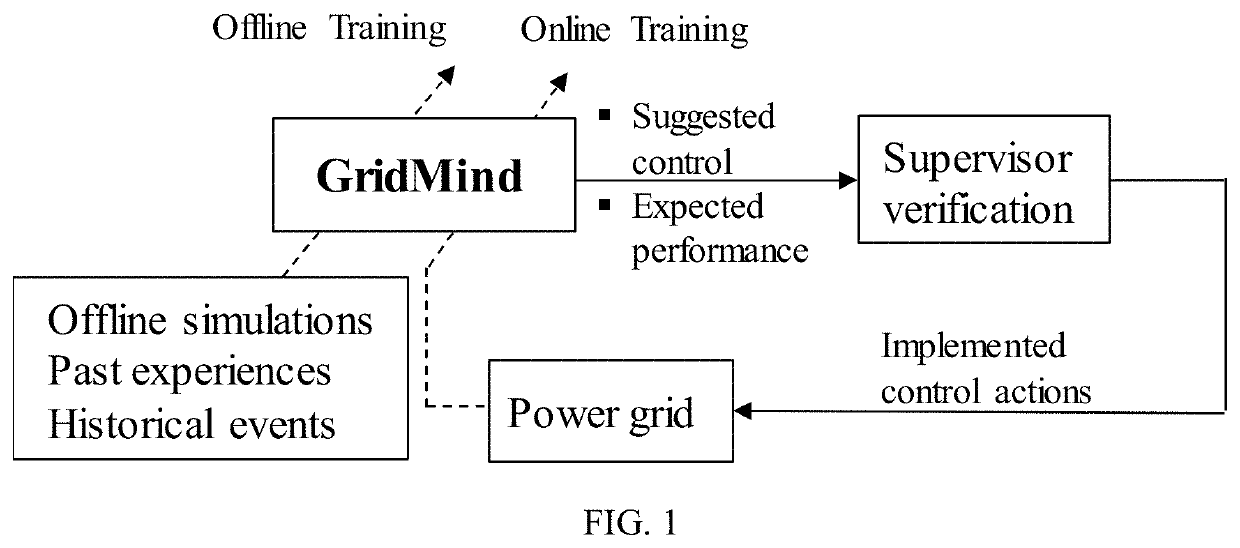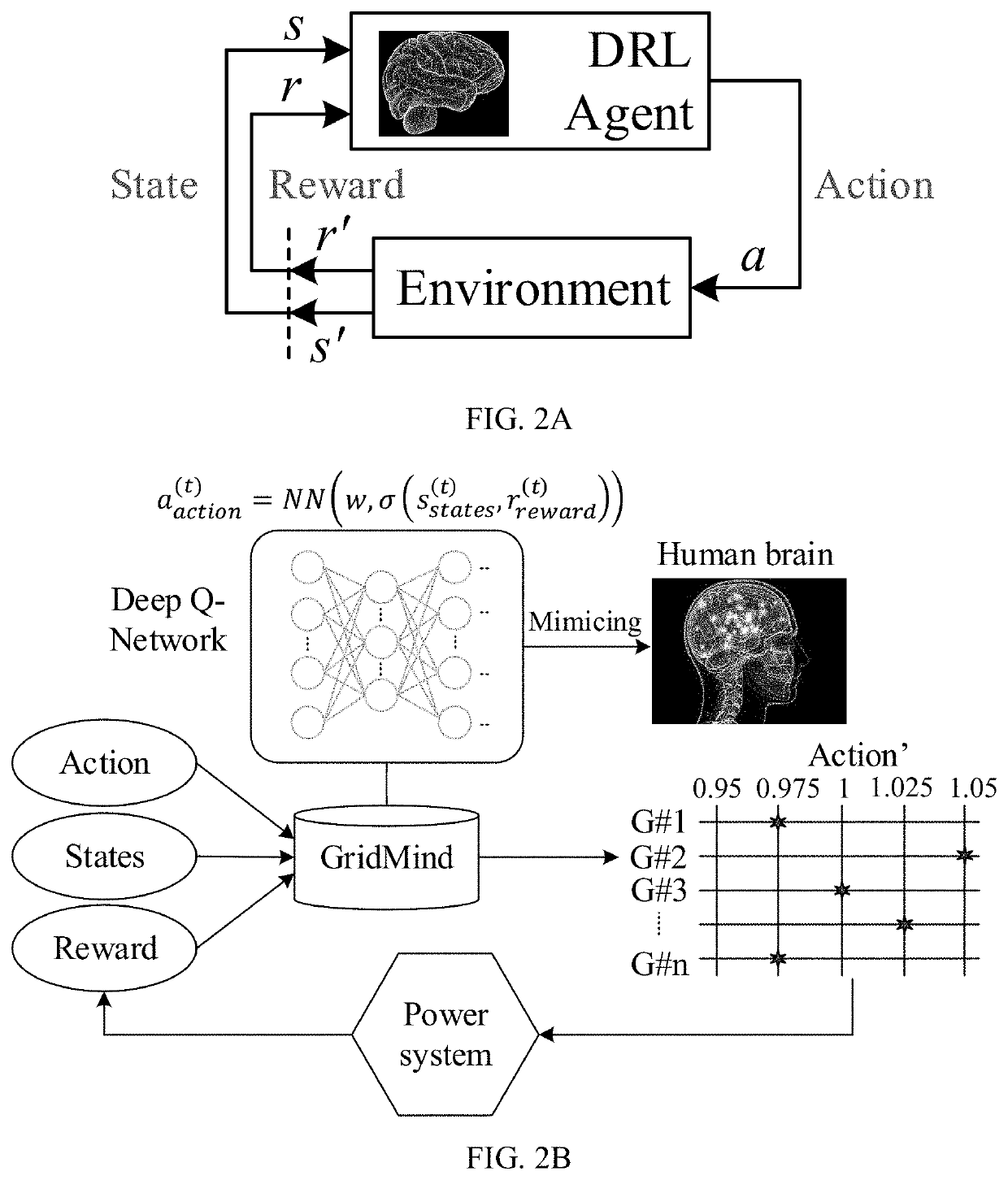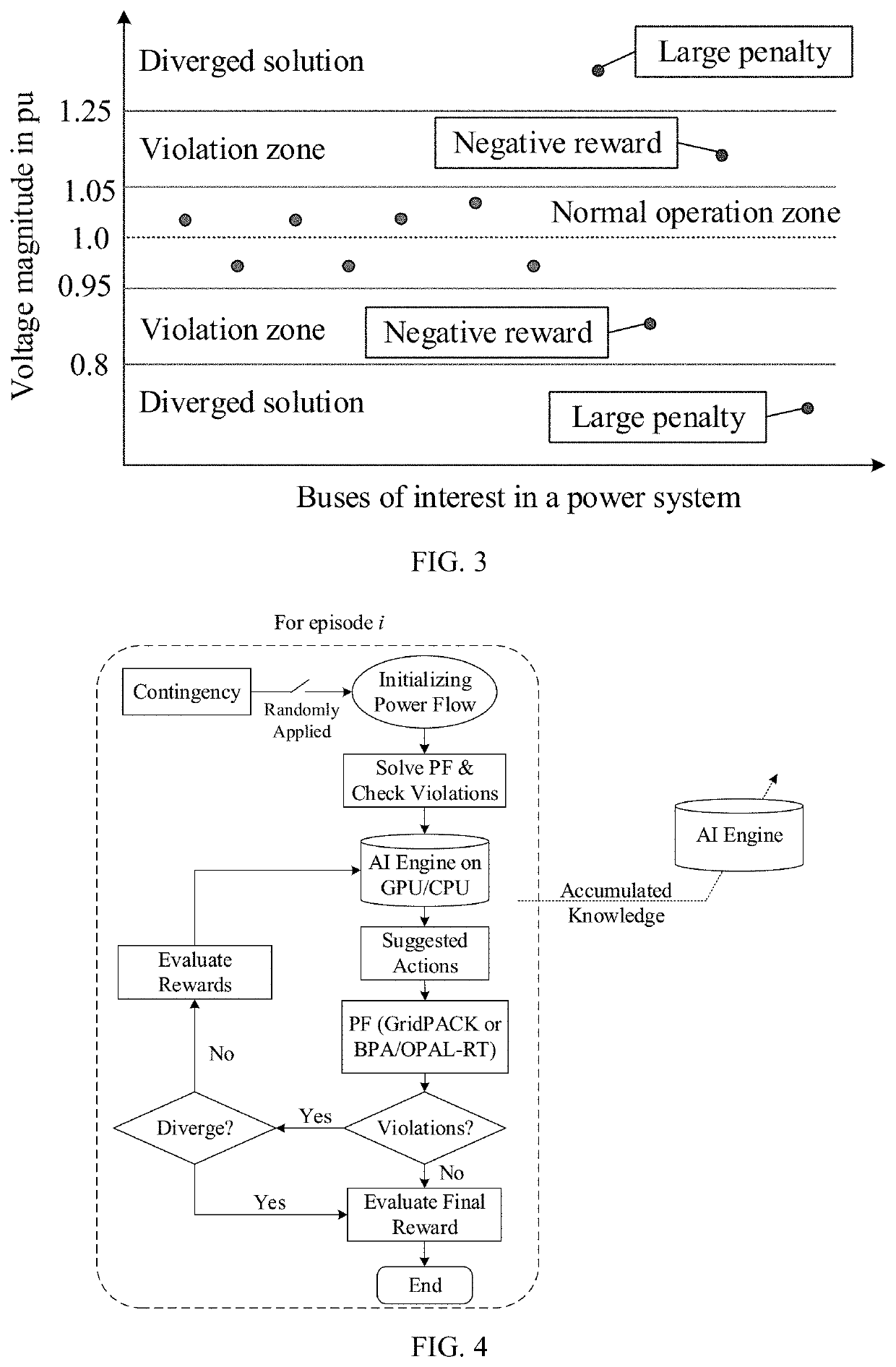Autonomous Voltage Control for Power System Using Deep Reinforcement Learning Considering N-1 Contingency
a power system and contingency technology, applied in adaptive control, process and machine control, instruments, etc., can solve the problems of threatening the secure and economic operation of power systems, wide-area blackouts, and the impact of such a control scheme is limited to the points of connection and their neighboring buses, so as to enhance the stability of a single dqn agent, improve the overall performance, and improve the control effectiveness of voltage control
- Summary
- Abstract
- Description
- Claims
- Application Information
AI Technical Summary
Benefits of technology
Problems solved by technology
Method used
Image
Examples
Embodiment Construction
[0033]An autonomous voltage control schema for grid operation using deep reinforcement learning (DRL) is detailed next. In one embodiment, an innovative and promising approach of training DRL agents with improved RL algorithms provides data-driven, real-time and autonomous control strategies by coordinating and optimizing available controllers to regulate voltage profiles in a power grid, where the AVC problem is formulated as Markov decision process (MDP) so that it can take full advantages of state-of-the-art reinforcement learning (RL) algorithms that are proven to be effective in various real-world control problems in highly dynamic and stochastic environments.
[0034]One embodiment uses an autonomous control framework, named “Grid Mind”, for power grid operation that takes advantage of state-of-the-art artificial intelligent (AI) technology, namely deep reinforcement learning (DRL), and synchronized measurements (phasor measurement units) to derive fast and effective controls in ...
PUM
 Login to View More
Login to View More Abstract
Description
Claims
Application Information
 Login to View More
Login to View More - R&D
- Intellectual Property
- Life Sciences
- Materials
- Tech Scout
- Unparalleled Data Quality
- Higher Quality Content
- 60% Fewer Hallucinations
Browse by: Latest US Patents, China's latest patents, Technical Efficacy Thesaurus, Application Domain, Technology Topic, Popular Technical Reports.
© 2025 PatSnap. All rights reserved.Legal|Privacy policy|Modern Slavery Act Transparency Statement|Sitemap|About US| Contact US: help@patsnap.com



